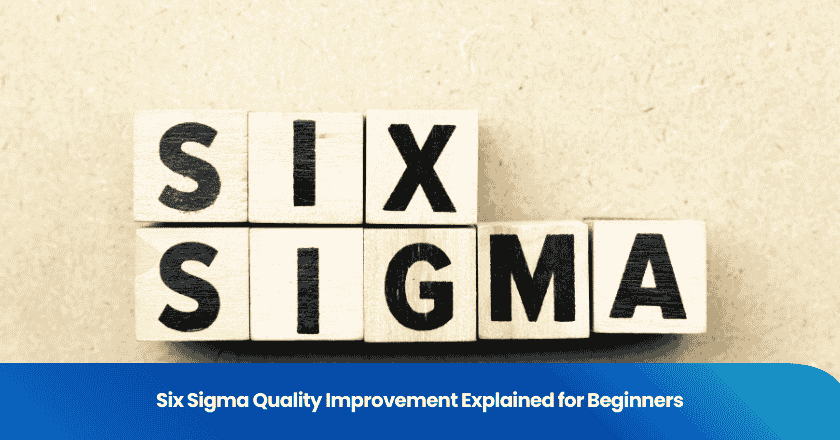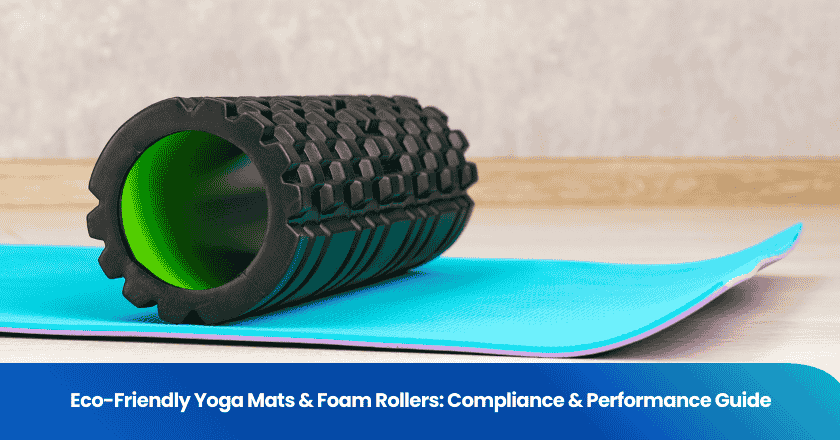
You can use six sigma to achieve higher standards in both business and everyday tasks. Six sigma quality improvement relies on data to reduce defects and minimize variation. You will find its methods practical and effective, using analytical tools like fishbone diagrams, 5 Whys, and Pareto charts to target root causes of problems. Many industries trust six sigma to drive improvement. You can access these techniques and apply them, whether you work in manufacturing, services, or want to boost your own performance.
Key Takeaways
- Six Sigma helps improve quality by reducing defects and variation in processes, ensuring consistent results.
- Focus on customer needs is essential; understanding what customers want drives quality enhancement.
- Use data-driven methods to identify root causes of problems and track progress for lasting improvements.
- DMAIC is for improving existing processes, while DMADV is for designing new processes or products.
- Engage in Six Sigma initiatives to foster continuous improvement and build customer loyalty.
Six Sigma Quality Improvement Basics
Definition
You can think of six sigma as a disciplined quality management methodology that helps you improve processes by reducing errors and variation. This approach uses data and statistical analysis to identify where problems occur and how to fix them. Six sigma aims to create processes so reliable that defects become rare. You do not just treat symptoms; you address the root causes of issues. By focusing on quality control, you ensure that your products or services meet high standards every time.
Purpose
The main purpose of six sigma is to help you achieve consistent, high-quality results in your work. Experts describe six sigma as a quality management methodology designed to improve business processes by identifying and eliminating defects. You use it to minimize variation, which leads to better quality and fewer mistakes. When you apply six sigma, you focus on making your processes predictable and efficient. This means you can deliver what your customers expect, every time. You do not just react to problems; you prevent them from happening in the first place. Six sigma quality improvement gives you the tools to make lasting changes that benefit your organization.
Tip: When you use six sigma, you shift your mindset from fixing errors after they happen to building processes that avoid errors altogether.
Importance
Six sigma plays a vital role in helping organizations stay competitive. You need reliable quality control to meet customer expectations and maintain your reputation. Six sigma is essential for organizations that want to enhance product and service quality, reduce defects, and achieve operational excellence. Its data-driven approach and focus on customer satisfaction help you stand out in any industry. You can see the impact of six sigma in manufacturing, where it optimizes production lines and reduces waste. However, its principles also improve processes in healthcare, finance, and other sectors by aligning operations with customer needs.
Here are some of the most common benefits organizations report after implementing six sigma:
| Benefit | Description |
|---|---|
| Enhanced Customer Satisfaction | Improves product quality and reduces defects, leading to a superior customer experience. |
| Increased Employee Engagement | Involves employees in problem-solving, boosting morale and investment in the company's success. |
| Cost Efficiency | Streamlines operations and eliminates waste, reducing production and operational costs. |
You can also measure the impact of six sigma basics on performance metrics:
| Evidence Type | Description |
|---|---|
| Cost Reductions | Avoidance costs decrease due to fewer warranty claims, customer returns, and regulatory fines. |
| Revenue Improvements | Increased production capacity and higher customer retention lead to better financial outcomes. |
| Process Efficiency Metrics | Cycle time reduction and labor productivity improvements demonstrate operational enhancements. |
| Quality Improvements | Lower defect rates and reduced variation indicate better quality control and customer satisfaction. |
| Capacity Utilization | Improved throughput on existing equipment avoids capital expenditures while increasing production. |
| Financial Impact | A 15% cycle time reduction can lead to a proportional increase in customer orders and revenue growth. |
You can see that six sigma quality improvement not only helps with defect/error reduction but also drives cost savings, higher customer satisfaction, and better employee engagement. By using six sigma, you build a culture of continuous improvement and strong quality control that supports long-term success.
Six Sigma Principles
Customer Focus
You start every six sigma project by understanding what your customers want. Customer focus stands at the heart of six sigma principles. You listen to customer feedback and use it to shape your goals. When you prioritize customer needs, you improve customer satisfaction and deliver products or services that meet expectations. Many organizations see quality enhancement as a direct result of responding to customer requirements. Projects that put customer needs first often achieve the strongest results.
- Customer focus is a core principle of six sigma methodology.
- Quality enhancement is primarily driven by customer requirements and demands.
- A project that prioritizes customer needs is considered a strong six sigma project.
You can improve customer satisfaction by making sure your processes align with what your customers value most.
Data-Driven Approach
Six sigma relies on facts, not guesses. You collect and analyze data to make decisions. This approach helps you find the real causes of problems and track your progress. You use different types of data to guide your six sigma quality improvement efforts:
| Data Type | Examples | Collection Methods |
|---|---|---|
| Quantitative | Measurements, counts, time studies | Automated systems, time studies |
| Qualitative | Customer complaints, operator observations | Surveys, manual observation |
| Performance Data | Defect rates, product variations | Quality checks, physical observations |
| Environmental | Workplace conditions affecting outcomes | Environmental monitoring |
| Historical | Production records, maintenance logs | Existing databases |
By focusing on data, you can improve customer satisfaction and make changes that last.
Reducing Variation
You use six sigma principles to create stable, predictable processes. Reducing and eliminating process variation helps you deliver consistent quality. Six sigma gives you tools to measure and control variation, so you can spot issues before they become problems. You apply statistical methods to understand and manage variation:
| Statistical Method | Description |
|---|---|
| Control Charts | Distinguish between common and special cause variation. |
| Regression Analysis | Reveal hidden relationships between process inputs and outputs. |
| Capability Analysis | Maintain suitable product specifications. |
| Gauge R&R Studies | Quantify measurement error and assess consistency of measurement outcomes. |
| Variance Components Analysis | Isolate product variability problems critical for quality assurance. |
| Pareto Analysis | Identify the most frequent and costly defects. |
You use regression analysis to uncover connections between variables, which supports better decision-making and drives continuous improvement. By focusing on reducing variation, you build processes that deliver reliable results every time.
Six Sigma Methodologies
DMAIC
You use DMAIC when you want to improve the process in an existing system. DMAIC stands for Define, Measure, Analyze, Improve, and Control. This six sigma method gives you a structured path to follow for six sigma quality improvement. Each step helps you focus on a specific part of the problem.
| Step | Description |
|---|---|
| Define | Identify the problem and set goals. |
| Measure | Gather data to understand the current state of the process. |
| Analyze | Identify root causes using data analysis tools. |
| Improve | Develop and implement solutions to address the root causes. |
| Control | Establish controls to maintain the improvements over time. |
You can see DMAIC in action in many industries. For example:
- A retail logistics team faced a rise in late deliveries. They used DMAIC to define the problem, measure late shipments, analyze staffing issues, improve with new staff and automation, and control results with daily reports.
- Companies have saved millions and improved customer satisfaction by following DMAIC cycles.
DMAIC works best when you need to fix or optimize a process that already exists.
DMADV
You use DMADV when you need to design a new process or product from scratch. DMADV stands for Define, Measure, Analyze, Design, and Verify. This approach helps you build quality into your design from the beginning.
| Stage | DMADV Description | DMAIC Description |
|---|---|---|
| Define | Focuses on understanding customer needs and project goals for new processes. | Similar focus on understanding needs but for improving existing processes. |
| Measure | Identifies critical-to-quality characteristics for new designs. | Measures current performance and identifies deviations in existing processes. |
| Analyze | Evaluates potential design options and trade-offs to meet customer requirements. | Analyzes data to identify root causes of issues in existing processes. |
| Design | Develops detailed designs and prototypes, ensuring alignment with customer needs. | Implements improvements based on analysis of existing processes. |
| Verify | Validates that the new design meets quality standards before implementation. | Ensures that improvements have effectively minimized variations in existing processes. |
You can find DMADV in industries like medical devices and pharmaceuticals. Teams have used DMADV to free up manufacturing space, save costs, and improve sustainability. For example, one project increased plant availability by over 200 hours and reduced maintenance by 33%.
Comparison
You choose DMAIC or DMADV based on your project goals. DMAIC helps you improve existing processes by reducing defects and controlling variation. DMADV helps you create new processes or products with six sigma quality from the start.
| Methodology | Effectiveness | Application |
|---|---|---|
| DMAIC | More effective for improving existing processes | Used when addressing complex problems with identifiable issues |
| DMADV | More effective for designing new processes or products | Used for projects requiring a ground-up redesign or new design |
- DMAIC is best for fixing or optimizing what you already have.
- DMADV is best for building something new or making a major redesign.
Tip: Use DMAIC for existing systems and DMADV for new designs. Both six sigma methods help you achieve lasting improvement and deliver value to your customers.
Implementation Steps
Roles
You play a key part in six sigma projects, but you do not work alone. Six sigma uses a team structure with defined roles. Each role has specific responsibilities that support the improvement process. Here is a table that outlines the main roles:
| Belt Level | Responsibilities |
|---|---|
| Green Belt | Participates in projects, leads smaller projects, collects and analyzes data, understands DMAIC. |
| Black Belt | Leads projects full-time, implements solutions, mentors Green Belts, manages stakeholder expectations. |
| Master Black Belt | Manages Six Sigma staff, develops strategic directions, mentors Black Belts, leads enterprise-wide projects. |
You might start as a Green Belt, supporting projects and learning the basics. Black Belts lead larger projects and guide others. Master Black Belts shape strategy and oversee the entire six sigma quality improvement program.
Tools
You use several tools to drive the improvement process. These tools help you analyze data, find root causes, and monitor progress:
- DMAIC: The core framework for process improvement.
- Pareto Charts: Show which problems have the biggest impact.
- Root Cause Analysis: Includes 5 Whys and Fishbone Diagrams to uncover underlying issues.
- Design of Experiments (DOE): Tests different variables to optimize results.
- Control Charts: Track process performance and detect changes early.
For example, you might use a Pareto chart to see that most defects come from a few sources. By focusing on those, you improve results quickly.
Getting Started
You can begin applying six sigma in your daily work by following these steps:
1. Define the problem and set clear goals.
2. Measure your current performance and gather data.
3. Analyze the data to find root causes.
4. Improve the process by testing solutions.
5. Control the new process to keep improvements in place.
This step-by-step approach helps you build confidence and see results from your improvement process.
Certification
Six sigma certification helps you advance your career and gain recognition for your skills. You can earn different levels of certification, such as Green Belt and Black Belt. Requirements vary, but most programs include an exam and sometimes project experience. Many professionals with six sigma certification move into leadership roles.
Employers value six sigma certification because it proves your ability to lead the improvement process and deliver results.
You gain measurable business value when you apply six sigma, even as a beginner. Six sigma reduces lead times by up to 80%, cuts manufacturing overhead by 20%, and improves on-time delivery above 99%.
Six sigma remains accessible through training, mentorship, and practical projects. You can start with certification at any level and join communities to deepen your understanding. Six sigma fosters continuous improvement, helping you adapt quickly, reduce defects, and build customer loyalty. You create lasting change by engaging in six sigma initiatives and focusing on quality every day.
FAQ
What is the main goal of six sigma?
You use six sigma to improve quality by reducing defects and variation in processes. This method helps you deliver consistent results and meet customer expectations. Six sigma focuses on data-driven decision-making for lasting improvements.
How do you start a six sigma project?
You begin a six sigma project by defining the problem and setting clear goals. Next, you collect data, analyze root causes, and implement solutions. Six sigma provides a structured approach, so you can follow each step with confidence.
Who should learn six sigma?
You benefit from learning six sigma if you want to improve processes, solve problems, or advance your career. Six sigma applies to professionals in manufacturing, healthcare, finance, and service industries. Anyone seeking better quality can use six sigma principles.
What tools do you use in six sigma?
You use tools like Pareto charts, control charts, and root cause analysis in six sigma projects. These tools help you identify problems, measure performance, and maintain improvements. Six sigma relies on practical tools to support your quality goals.
Can you apply six sigma outside of business?
You can use six sigma in daily life to improve personal productivity, reduce errors, and achieve goals. Six sigma techniques help you organize tasks, analyze problems, and create better routines. Many people find six sigma useful beyond the workplace.
Grow your business with TradeAider Service
Click the button below to directly enter the TradeAider Service System. The simple steps from booking and payment to receiving reports are easy to operate.



